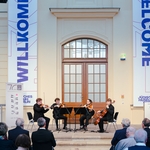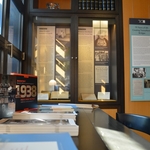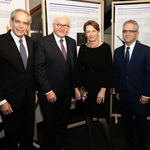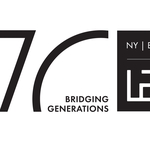Remembering Kristallnacht
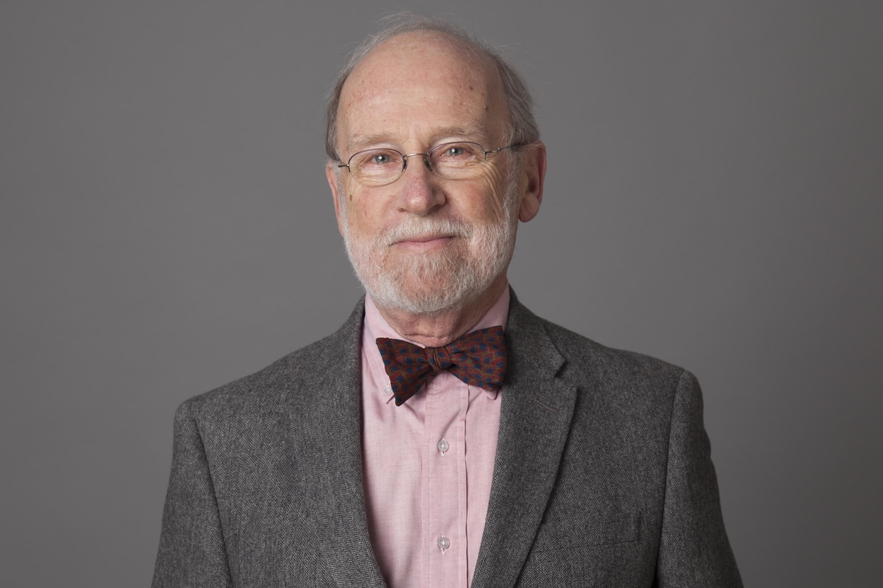
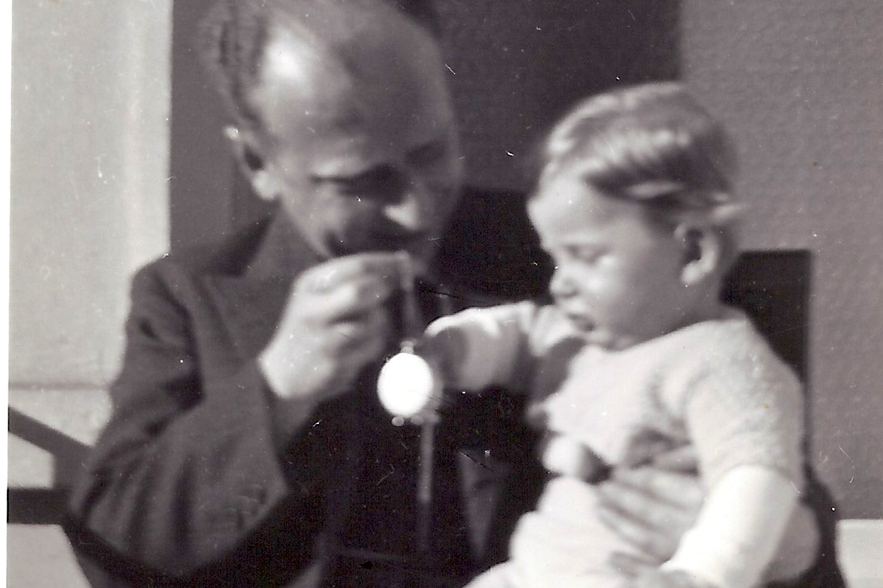
- Autor
- Werner Gundersheimer
- Datum
- Do., 8. Nov. 2018
In 1988, on the 50th Anniversary of Kristallnacht, LBI Vice President Werner Gundersheimer wrote this reminiscence of his family’s experience of Kristallnacht in Frankfurt:
Nov. 9, 1938—Kristallnacht, the night of broken glass and shattered lives. Though an infant, I was there. Only later did I learn the story of this crucial turning point in the Germans’ war against the Jews. Even so, after nearly a half-century of reliving that event through my parents’ memories, I find its anniversary the single most painful day I must endure each year. The three of us were home that night in our apartment at 27 Lehrbachstrasse, not far from the medieval center of Frankfurt and in easy walking distance of my father’s latest job. The Nuremberg Laws had deprived my father of his position as a docent at the university. He was an expert in Bavarian and Franconian church decoration, but when wrenched from his professional world, he had an unusual chance to adapt his expertise to the study and care of rare Jewish ceremonial objects—he became curator of the Rothschild Museum of Judaica, an extraordinary collection covering nearly a thousand years of Jewish life in Germany. But on Kristallnacht, the Rothschild Collection was just one casualty among thousands of Jewish institutions and businesses vandalized or destroyed by Germans inflamed by Nazi propaganda and encouraged by government provocateurs. More than 20,000 Jewish men were arrested, penned up in stadiums and other facilities or shipped to concentration camps. In fact, soon after my father left to check on the museum the next morning, police called to order him to come to their headquarters. Knowing what could be in store, my mother, the perfect hausfrau, prepared some sandwiches for him to take into captivity. A few moments later, he was home with reports of the
terror and devastation that had turned him back from his errand. Mother’s tearful account of the ominous phone call was interrupted by another call. This time it was the Gestapo, ordering him to report to their headquarters. Choosing between these agencies posed a fateful dilemma, but my father did what any obedient German would have done—he answered to the higher authority, the dreaded Gestapo. It was no comfort that he already knew their ways. Months earlier, on the day I was first brought home from the hospital, the Gestapo had searched our apartment for subversive books. To my father’s surprise, he didn’t need the sandwiches. Unlike some of my uncles, he knew too much about Jewish art to be sent to Dachau. Recognizing the value of the pillaged museum treasures, the Gestapo wanted him to explain to the government what it had confiscated. For the next eight months, he labored alone at this task, under the eye of an armed guard, who kept his pistol on the desk in front of him. Nine months later, shortly after he finished this depressing assignment, we were allowed to leave the land where our family had lived since the 16th century. Within two weeks, Germany had invaded Poland. After the war, a handful of objects from the Rothschild Museum surfaced and entered public collections in New York, Los Angeles and Jerusalem. Perhaps, a few others will turn up, but the world that produced them is gone forever. The story could end here, but in the complex byways of history are unexpected twists and turns. In the autumn of 1940, my father became the first art historian (and only the second Jew) to join the faculty of Temple University, the great Philadelphia urban institution founded in the 1880s by Russell Conwell, a charismatic Baptist preacher. Thirty years later, having taught generations of students and built a major department, my father retired amid many accolades. Four years ago, still active and productive at 81, he received a letter from the mayor of Frankfurt. The city had decided to create a museum to tell the story of its 800 years of Jewish history and culture. Although human and material traces were almost gone, the authorities had determined that this crucial dimension of the German past should never be forgotten. The mayor asked whether Dad would be willing to return to Frankfurt for a month and work with museum and municipal officials on plans for the new museum. My father always insisted that the new German generations should not be blamed for what their predecessors had done. Miraculously free of bitterness and impressed by the mayor’s earnest desire for reconciliation and knowledge, he and my mother went to Frankfurt. Once again, as in 1938, Dad did what he could to salvage and organize the scattered shards of a heritage. This time, he was not alone. Nov. 9, 1988, the 50th anniversary—Tonight in Frankfurt, the new Jewish Museum will be dedicated, in the presence of numerous dignitaries and two rather remarkable AmericansHerman Samuel Gundersheimer and his wife Friedl, who still makes his sandwiches.
This article was originally published in the Washington Post on November 9, 1988. Herman and Friedl Gundersheimer passed away in 2004.
Aktuelles
